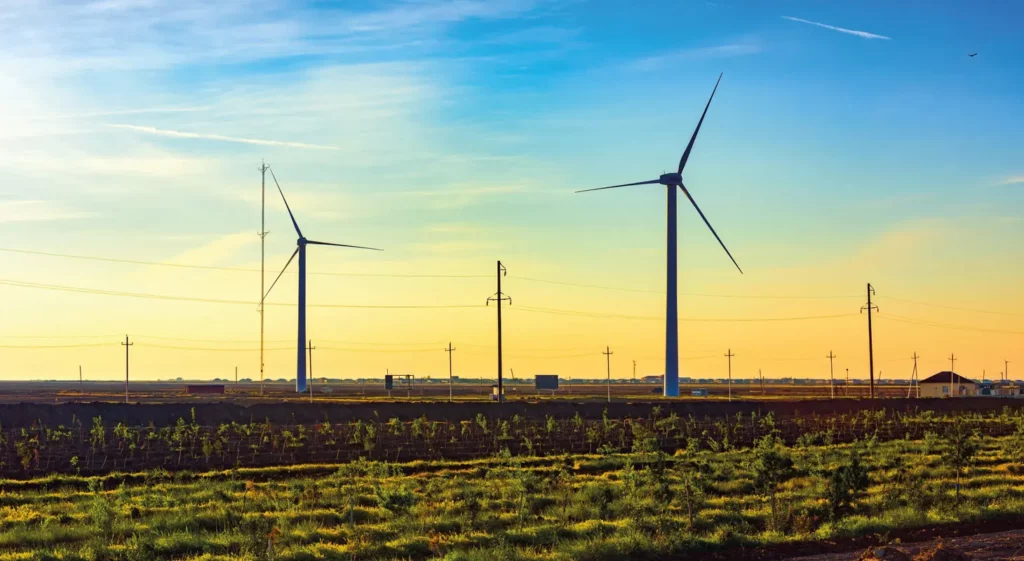This article was first published in H2 View.
By Daria Nochevnik, Director of Policy and Partnerships, Hydrogen Council.
The RePowerEU plan published on May 18, following the European Commission communication of March 8, reinforces Europe’s commitment to rapidly reducing, and ultimately getting rid of, its dependence on Russian fossil fuels.
As part of the plan, alongside a suite of measures to diversify gas supplies in the short-to-medium term, as well as to remove bottlenecks around licensing and permitting for renewables, the commission laid out its vision for a Hydrogen Accelerator. The key target under the accelerator initiative is to use 20 million tonnes (mt) of renewable hydrogen in the EU by 2030, out of which 10 mt are to be produced within Europe and another 10 mt imported from third countries.
According to commission estimates, using 20 mt of renewable hydrogen in the EU in 2030 would displace up to 50 bcm – or up to a quarter – of Russian natural gas imports.

In the words of the European Commission President Ursula von der Leyen, “The quicker we switch to renewables and hydrogen, combined with more energy efficiency, the quicker we will be truly independent and master our energy system1.”
The renewable power and hydrogen ambition set out in the RePowerEU plan is strong but how much system thinking is there across the underlying legislative measures? And are these underlying measures fit for purpose to unlock Europe’s hydrogen and renewable power potential?
Policymakers in Europe have been doing their utmost to respond to the immediate threat to the EU’s energy security. Yet making sure that short-term measures do not create inefficient outcomes in the longer run is a challenge.
By now, nearly everyone in the hydrogen world has heard of the concepts of additionality, geographical and temporal correlation set out in the proposed EU rules for qualifying hydrogen production as renewable for the purposes of compliance with the future EU-wide renewable hydrogen consumption targets2. At the same time, many have been struggling to figure out how exactly these qualifications will be applied in practice, both for renewable hydrogen produced in Europe and that imported from third countries.
For example, electrolysers connected to the grid would need to evidence that they are powered by unsubsidised renewable electricity and demonstrate the matching of renewable electricity with renewable hydrogen production on an hourly basis (otherwise the hydrogen produced would not be considered as renewable).
Aside from the fact that hourly GOs exist in very few countries in Europe and globally, the stringent requirements placed on electrolysers beg the question: why is the role of hydrogen in enabling indirect electrification restricted?
Direct vs indirect electrification – why should we have ‘either/or’ and not both?
Imagine you purchase an electric car and to receive a tax benefit you need to qualify your rides as ‘renewables-based’ and evidence on an hourly basis that you are charging your electric vehicle with strictly renewable electricity. Side note: in 2021, power sector emissions in Germany were estimated at 349g CO₂/KWh of electricity generated3.
Following a similar logic, large data centres would have to be built strictly in countries whether the grid mix is already nearly fully renewable (there are only three in Europe – Sweden, Austria and Norway). Side note: data transmission networks consumed 260-340 TWh in 2023, or 1.1‑1.4% of global electricity use4.
Some suggest that direct electrification should be the priority, regardless from whether/the extent to which the electricity used is renewable, as renewable electricity capacity will increase. Yet this perspective neglects the complementary role of indirect electrification that can be achieved thanks to hydrogen deployment. Renewable hydrogen allows integrating greater renewable energy capacity in the system while:
- Helping alleviate grid constraints (in Germany alone nearly €1bn of taxpayers’ funding was spent last year on curtailed renewable power)
- Offering flexibility to the power grid
- Allowing to make use of existing infrastructure endowments (repurposing gas pipelines for hydrogen use) to transport large volumes of renewable energy over long distances in a cost-effective manner
- Enabling energy consumers for whom direct electrification is not a viable option (heavy industry) to decarbonise.
To get the chance to succeed in our race against climate change, we need both solutions – direct and indirect electrification – as they are complementary to each other.
Having a preference for one over the other is a policy choice and a way to pick winners. Yet there are no one-size-fits-all solutions for all geographies and end-users, and there will ultimately be no winners if we don’t deliver on
our climate commitments fast enough.
Will renewable hydrogen have a future in Europe?
The concept of additionality in itself is integral to hydrogen deployment. The ramp up of renewable hydrogen goes hand in hand with the development of new/additional renewable electricity capacity in Europe and globally.
However, the way in which it is proposed to apply additionality to renewable hydrogen in combination with geographical and temporal correlation puts in question the future of renewable hydrogen in Europe, let alone Europe’s ability to achieve the targets laid out in the Hydrogen Accelerator initiative.
The conclusions from modelling the application of these criteria to some of the real-life project proposals are despairing. Not only would the cost of renewable hydrogen double (or in some cases, more than double), the load factors of electrolysers would be prohibitively low – in other words, the business case for electrolysers will be de facto jeopardised.
What about renewable hydrogen imported from third countries? Prospective exporters struggle to see how they could meet the required qualifications specific to the EU energy market design. The proposed rules fail to recognise the differences in energy market design and market infrastructure endowments in third countries, from which renewable hydrogen may be imported (where power pricing is not zonal, for example). In addition, one should consider that market infrastructure is at different stages of maturity across the prospective exporting countries, including those in North Africa (the first PPA was signed in Egypt only in 2020).
Another major barrier for prospective exporters of renewable hydrogen and derived products is indeed the requirement to have renewable hydrogen subject to ‘effective carbon pricing’. Let us not forget that the EU cap and trade system (EU ETS) had teething issues. While it was set up in 2005, one may argue that it really started delivering only towards the end of the last decade – it took it more than 15 years. While a number of jurisdictions outside the EU are looking at introducing cap-and-trade systems/carbon taxes, the adoption of these instruments is a lengthy legislative process.
The above requirement would preclude imports of renewable hydrogen or derived products from third countries with abundant renewable power resources due to the absence of carbon pricing in their respective jurisdictions.
Watershed moment for the EU energy system
The EU still has the chance to review renewable hydrogen qualifications and make them fit for purpose. A pragmatic approach embracing both direct electrification through renewable power and indirect electrification through hydrogen can be a true game-changer for Europe.
The RePowerEU plan offers Europe a unique opportunity to unlock its renewable electricity and hydrogen potential and reap decarbonisation, energy security, cost-efficiency and resilience benefits, and ultimately – to master its energy system. Will Europe take it?
References
- European Commission President Ursula von der Leyen’s address at the press conference on the RePowerEU communication, 08 March 2022
- The Delegated Acts on Renewable Fuels of Non-Biological Origin (RFNBO) that were due to be developed by 31 December 2021 as per Art. 27(3) and Art. 28 (5) setting out the methodology for qualifying electricity used for RFNBO production as renewable and the methodology for assessing the GHG emissions savings from RFNBO respectively
- https://www.statista.com/statistics/1290224/carbon-intensity-power-sector-germany/
- https://www.iea.org/reports/data-centres-and-data-transmission-networks



